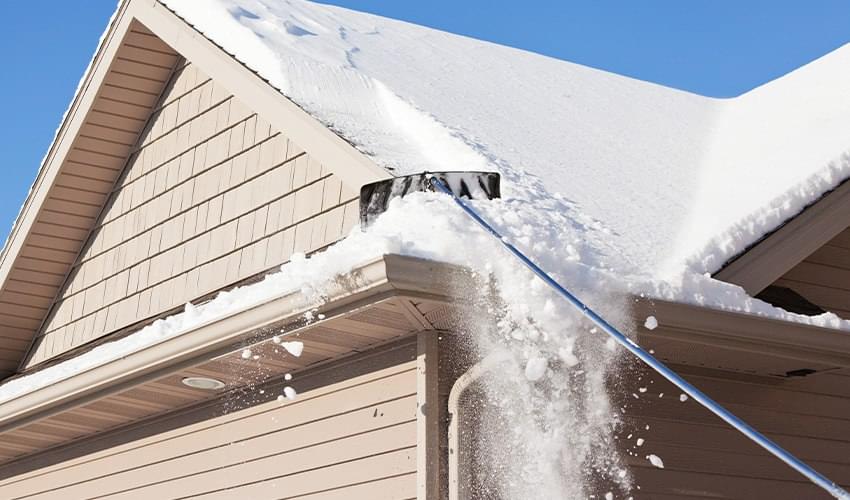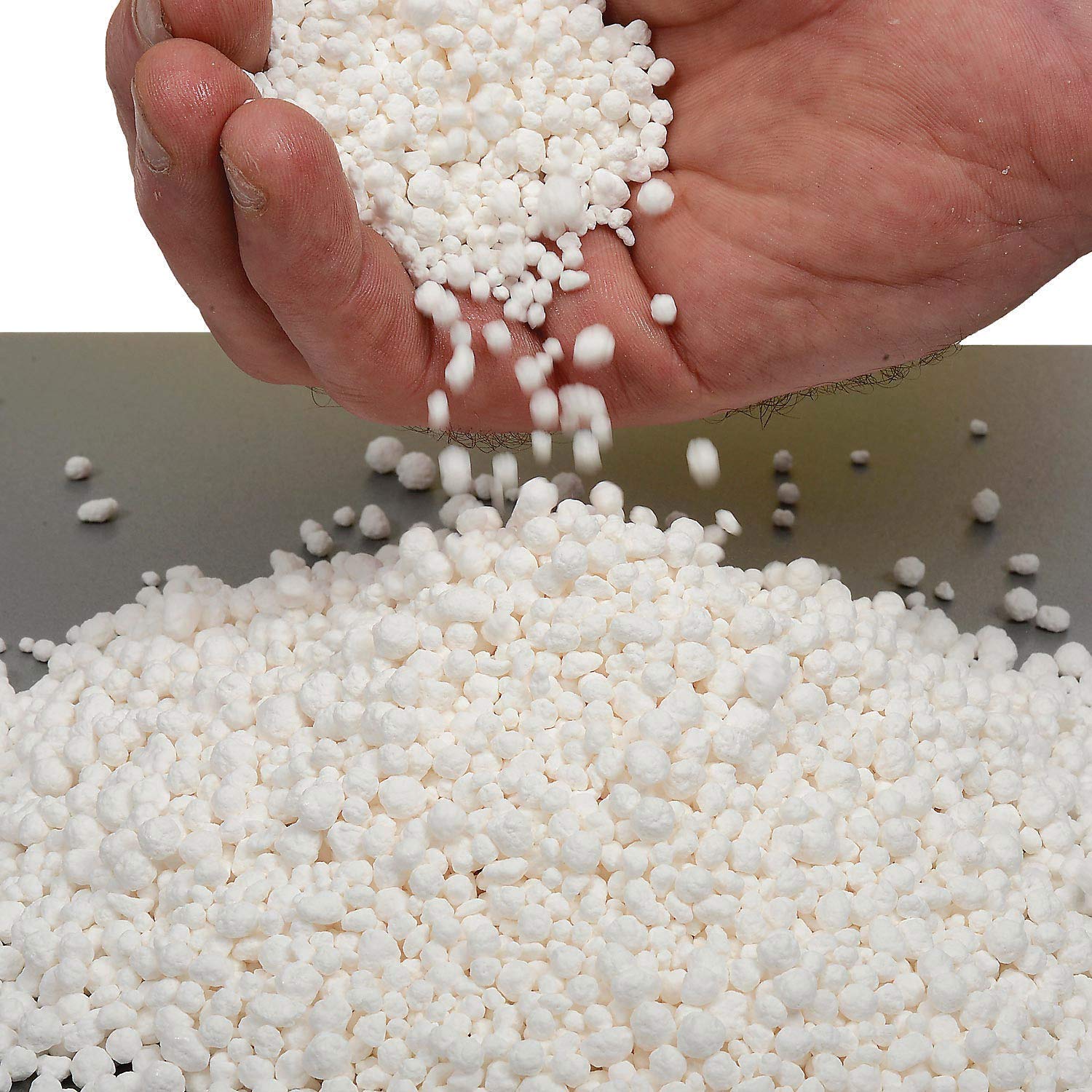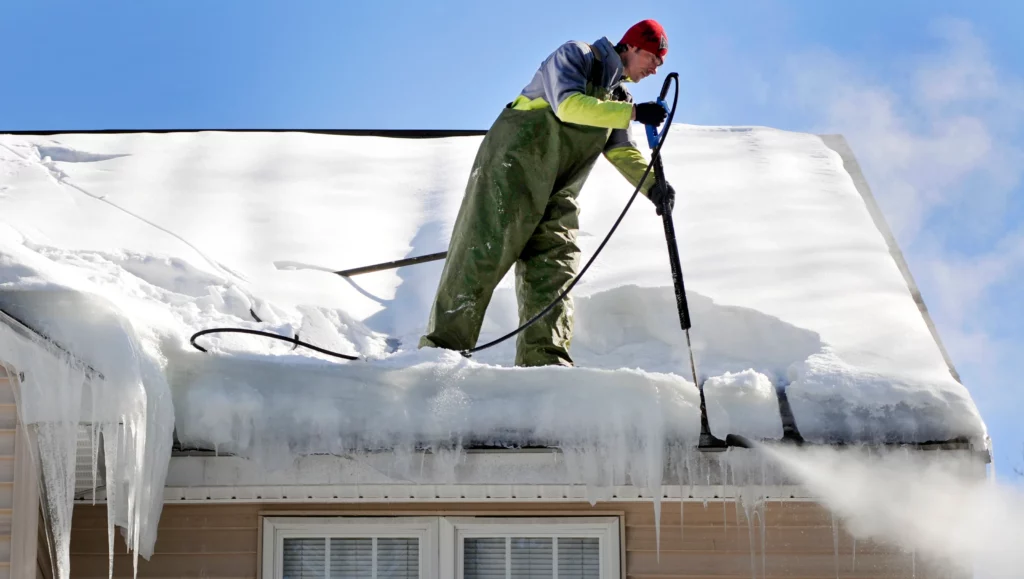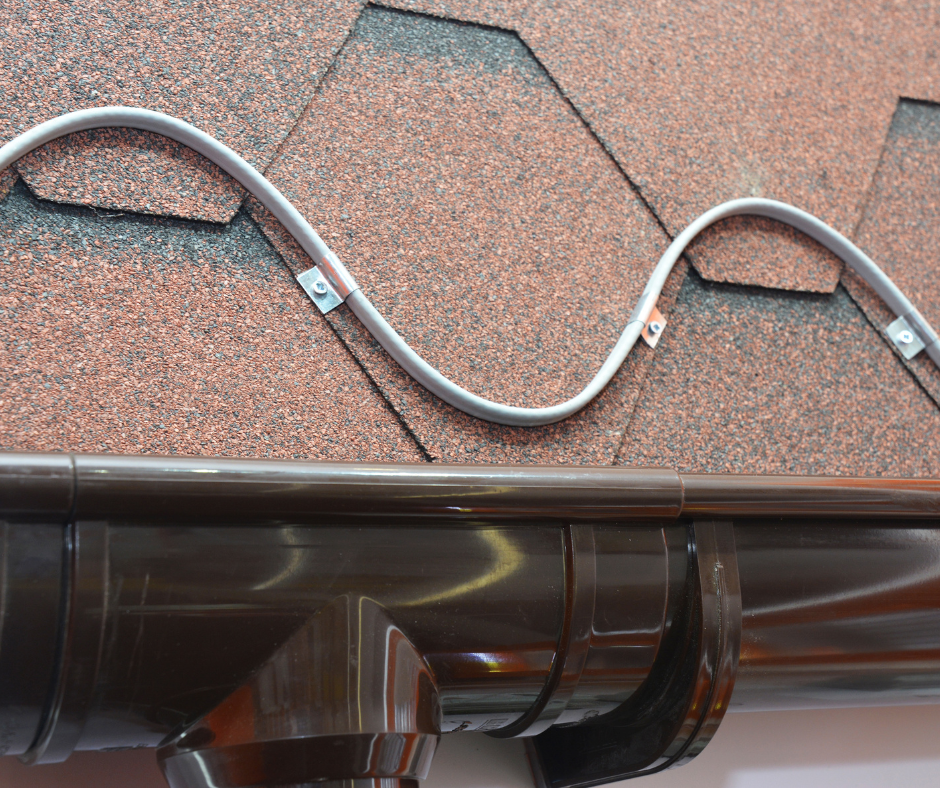7 Tips for Cleaning Snow Off Your Roof
Winter means one thing all homeowners dread: lots of snow. When snow builds up on your roof, it can increase the risk of leaks and ice dams.
As a homeowner, you want to avoid roof leaks by all means possible. When the snow hits, it’s best to clean excess snow off your roof.
When you get the snow off your roof, there’s a right and wrong way to do it. So, what’s the best way to get rid of snow without damaging your roof?
Rescue My Roof has faced nasty Wisconsin Winters for over a decade. We know a thing or two when it comes to roof snow removal.
This article will give you our top tips for cleaning snow off your roof. In the end, you’ll have a snow-free and safe roof, ready to conquer the rest of winter.
How To Get Snow Off Your Roof
If you endure winter every year, you must remember that your roof needs to be free of heavy snow as much as your driveway or sidewalks.
While your roof can handle a few inches of snow, if it begins to build up, there’s an increased risk of ice dams.
Using our tips, you can clean snow off your roof with no damage to its shingles or integrity.
1. Use A Roof Rake

A roof rake can aid in removing excess snow from your roof.
Roof rakes look like a shovel with a very long handle so that you can reach the very peak of your roof. Using the head of it, you can gently scrape the snow off your roof.
Snow build-up on your roof will eventually melt. And if the temperatures are still cold enough, it will freeze near your gutters and cause ice dams.
Keeping the snow on your roof to one to two inches will minimize the chance of ice dams.
Are you looking for the perfect roof rake to help manage ice dams? We recommend finding one with wheels so the roof’s shingles are not damaged. You can find one here.
2. Calcium Chloride Tablets

Calcium Chloride is a chemical that dissolves and eats away the ice and snow.
Calcium Chloride can effectively melt snow and ice without a lot of labor. The chemical will also not harm or stain your roof as salt does.
However, if you have pets, it’s best to use calcium chloride in areas they don’t have access to, as some brands may not be pet friendly.
3. Steam Snow Removal

When the snow gets out of control, use a steam machine.
A steamer uses hot water vapors to melt away snow and ice quickly. Most roofing contractors use it to mitigate ice dams, but you can rent or purchase one for smaller projects.
You can purchase a steamer here or call in a roofing professional who offers those services.
While paying a professional may be more expensive than trying to DIY it, you will see better results and know that your roof is in good hands.
4. Heating Cables

Heating cables are a good option for minimizing snow and ice dams if you notice they are beginning to build up.
Heat cables are plugged into an energy source and attached to the roof. The cables heat up and melt the surrounding ice and snow.
This method does have some drawbacks. Heating cables are not pleasing to the eye and may detract from curb appeal. Additionally, you may see a slight increase in your energy bills.
However, if you want a low-maintenance option for dealing with Mother Nature, this method may be for you.
5. Don’t Walk On Your Roof
In the warmer months, you may be tempted to access your roof with a ladder if you notice a problem.
During the winter, it can be dangerous to climb on your roof. Even with the proper shoes, snow and ice could make the climb too risky.
If you notice snow or ice build-up, use a method safe on the ground, like a roof rake or calcium chloride tablets.
If those alone aren’t effective, it may be time to call a roofing professional.
6. Don’t Use Brooms or Mallets
If there’s snow and ice, homeowners may be tempted to remove it with everyday home items like brooms, shovels, or mallets.
However, things that brush harshly across the surface of your roof can cause granule loss.
Additionally, using a mallet or a hammer to remove ice can crack your shingles, leaving them ineffective.
Only use the recommended items to clean snow and ice off your roof to protect your roof from damage.
7. Leave A Thin Layer of Snow On Your Roof
It seems counterproductive – if you’re going to clean snow off your roof, you may as well do all of it.
However, not scraping away at the surface of your roof will protect it in the long run.
When you scrape snow off down to the bare shingles, it can result in granule loss.
Instead, leave an inch on your roof to ensure nothing is damaged while simultaneously getting the bulk of the weight off your roof.
Cleaning Your Roof In Winter
Many homeowners ignore their roofs no matter the time of year. But if you want your roof to last a lifetime, some maintenance is involved – especially during winter.
If you notice snow and ice beginning to build up on your roof, it’s time to follow our tips to clean it. Or, if you don’t want to venture into the cold, you can call the experts to do it for you.
Want to learn more about your roof during the winter? Read “4 Ways to Manage and Remove Ice Dams” and “4 Consequences of Having Too Much Snow on Your Roof.”
If you need help battling the Wisconsin winter, you can call Rescue My Roof to get an estimate for all winter roofing services.


